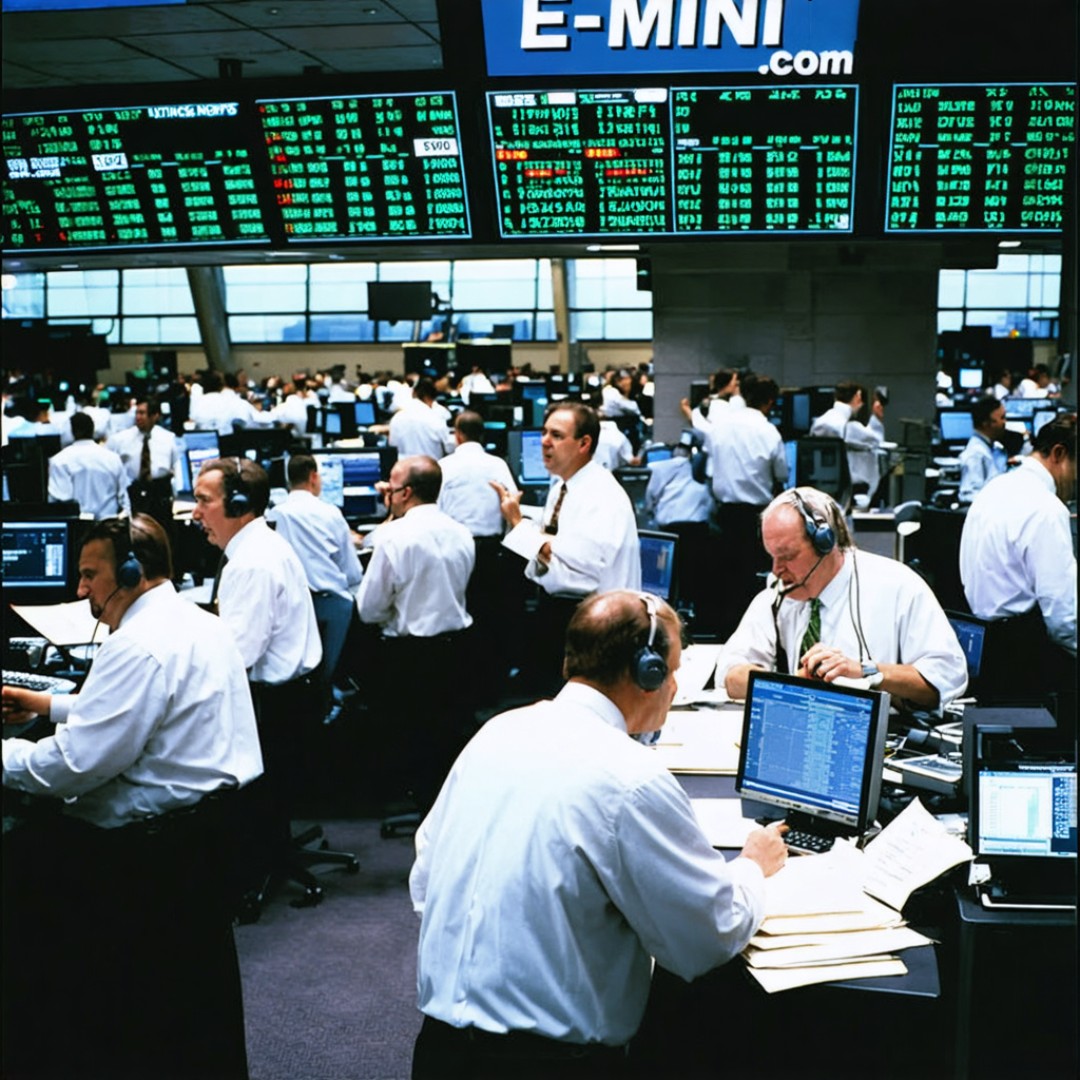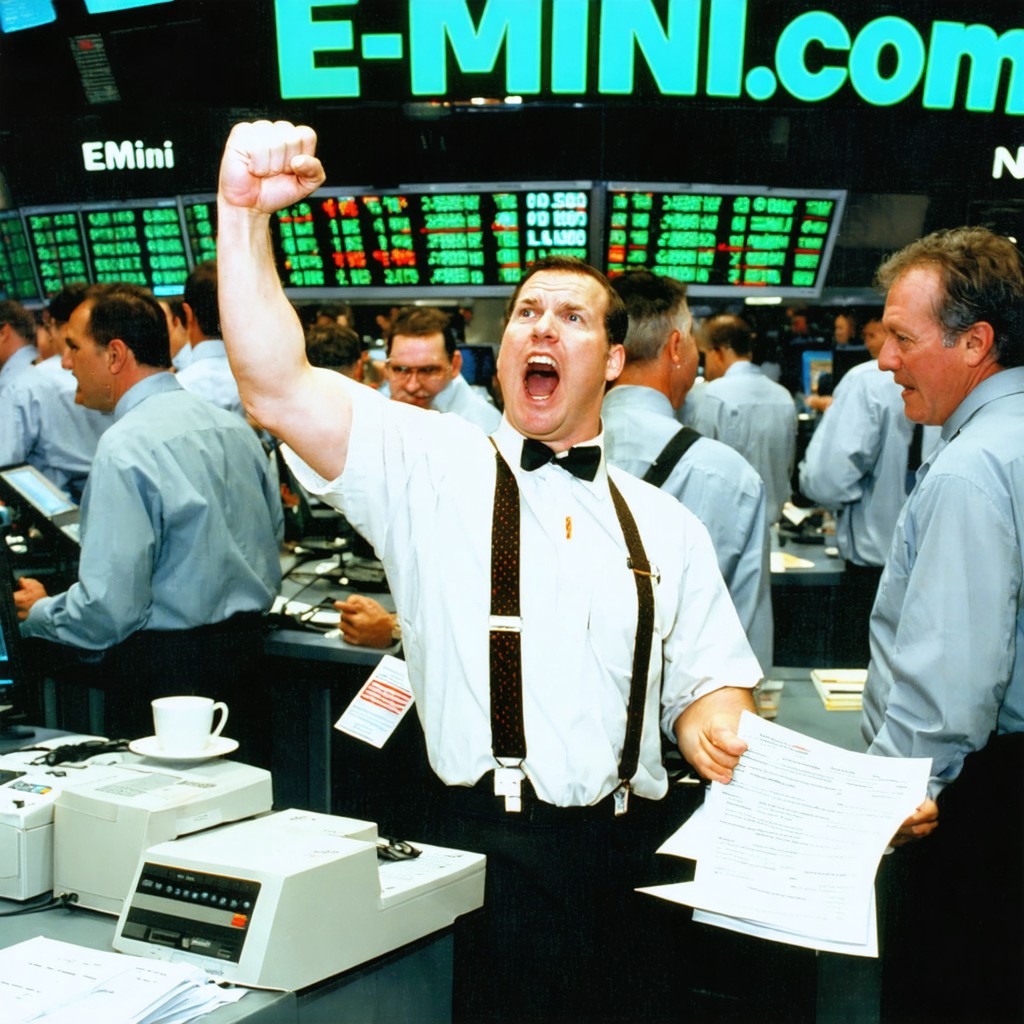The e-mini, often referred to as emini, e mini, or e-mini, is one of the most versatile futures contracts available on the market today, providing traders and investors with a highly effective way to hedge their portfolios, speculate, and gain market exposure in a cost-effective manner. With its roots in the early 1990s, the emini futures contract has grown in popularity, capturing the attention of both retail and institutional investors alike. This contract, initially introduced to make futures trading more accessible to smaller investors, has revolutionized how traders approach futures markets, providing a dynamic tool for portfolio management. This article delves into the history of the emini futures contract, explores various hedging techniques using emini futures, and examines why it remains a versatile financial instrument.
Origins and History of the Emini Futures Contract
The emini futures contract was introduced by the Chicago Mercantile Exchange (CME) on September 9, 1997, with the goal of making futures trading more accessible to a broader range of investors. Prior to this, futures trading was primarily dominated by large institutional investors and professional traders who could handle the substantial margin requirements and risks associated with full-sized futures contracts. The introduction of the emini, specifically the E-mini S&P 500, provided a smaller-sized alternative that allowed individual traders to participate without the substantial capital outlay required by full-sized contracts.
The decision to create the emini was largely influenced by increased demand for a more accessible futures product. The CME recognized the need to cater to the growing interest in electronic trading and smaller contract sizes. By creating the emini, the CME enabled a wider audience to hedge their portfolios and engage in market speculation. This smaller contract quickly gained popularity due to its lower margin requirements and the increased leverage it provided to smaller investors. As a result, the emini futures contract became a staple in the portfolios of retail and professional traders alike.
The Versatility of the Emini Futures Contract
The emini futures contract’s versatility stems from its ability to provide traders with a range of benefits, including leverage, liquidity, and the ability to trade multiple market indices. The most widely traded emini contract is the E-mini S&P 500, which tracks the S&P 500 Index, providing exposure to 500 of the largest companies in the United States. However, other indices are also available as emini contracts, including the E-mini Nasdaq-100, E-mini Russell 2000, and E-mini Dow. These contracts offer exposure to different segments of the market, enabling traders to tailor their strategies based on their specific market outlook.
Emini futures are particularly versatile for several reasons:
- Leverage: Emini contracts allow traders to control a large amount of market value with a relatively small amount of capital, increasing the potential for profits (and losses). This leverage is particularly attractive to traders looking to hedge their portfolios without committing a large amount of cash.
- Liquidity: Emini futures contracts are among the most liquid financial instruments in the market. High liquidity ensures that traders can easily enter and exit positions with minimal slippage, even during periods of high market volatility. The liquidity of emini futures contracts makes them suitable for high-frequency trading and algorithmic trading, where quick order execution is essential.
- 24-Hour Market Access: Unlike stocks, emini futures trade almost around the clock, providing traders with the flexibility to react to market-moving events regardless of the time. This 24-hour access is particularly beneficial for hedging, as traders can adjust their positions based on real-time events and market sentiment.
- Cost-Effectiveness: Emini contracts typically have lower transaction costs compared to full-sized futures contracts. Lower commissions and smaller margin requirements make them ideal for individual traders and smaller institutions.
- Hedging Flexibility: Due to the wide range of emini products, traders can hedge various market segments or specific portfolios. For instance, an investor with a portfolio heavily weighted in technology stocks might choose the E-mini Nasdaq-100 contract, while a small-cap investor might choose the E-mini Russell 2000 contract. This flexibility makes emini futures an excellent tool for hedging both broad market exposure and more targeted positions.
Hedging Techniques Using Emini Futures Contracts
Hedging is a crucial technique for protecting investment portfolios against adverse price movements. Emini futures contracts provide a highly effective way to hedge stock trades due to their high correlation with the underlying indices they track. Here are several hedging strategies that leverage the versatility of emini futures contracts:
- Index Hedging with E-mini S&P 500: One of the simplest and most common hedging strategies involves taking a position in the E-mini S&P 500 futures to offset risk in a portfolio that tracks or correlates closely with the S&P 500 Index. For example, if an investor holds a portfolio of large-cap stocks, they can short E-mini S&P 500 futures to hedge against potential declines in the overall market. This strategy provides protection against systemic risk, which affects the entire market, by balancing out losses in the portfolio with gains in the short futures position.
- Sector-Specific Hedging with E-mini Nasdaq-100 or E-mini Russell 2000: Investors can use different emini futures contracts to hedge specific sectors. For instance, a technology-heavy portfolio may benefit from hedging with E-mini Nasdaq-100 futures, as the Nasdaq-100 includes many large tech companies. Similarly, a portfolio with small-cap stocks may use E-mini Russell 2000 futures. By selecting an emini contract that aligns with the specific risk factors of their portfolio, investors can achieve a more tailored hedge.
- Pairs Hedging: Some traders employ pairs trading to hedge using emini futures. For example, an investor may be bullish on large-cap stocks but bearish on small-cap stocks. In this case, they might go long on E-mini S&P 500 futures while shorting E-mini Russell 2000 futures. This strategy allows them to profit from the relative performance of one index over the other, rather than the direction of the market as a whole.
- Hedging Single Stock Exposure with Emini Futures: While emini contracts are based on indices, they can also be used to hedge individual stock positions if the stock has a high correlation with the underlying index. For example, if an investor holds a significant position in a company that is a major component of the S&P 500, such as Apple, they may use the E-mini S&P 500 contract to hedge against market-wide volatility that could affect the stock’s price.
- Dynamic Hedging with Delta-Neutral Strategies: Dynamic hedging involves adjusting a position as market conditions change to maintain a delta-neutral position, where the portfolio’s gains or losses are balanced. Emini futures can be used in delta-neutral strategies by adjusting the number of contracts held based on the portfolio’s exposure to market movements. This approach requires constant monitoring and adjustment but provides a highly responsive hedge.
- Event-Driven Hedging: Major economic events, such as interest rate announcements, earnings reports, or geopolitical developments, often lead to increased market volatility. Traders can use emini futures to hedge their portfolios during these events, allowing them to protect against adverse price swings without liquidating their holdings. For example, if an investor anticipates a significant market reaction to a Federal Reserve meeting, they may temporarily hedge with emini futures to mitigate potential downside risks.
The Future of the Emini Futures Contract
As the emini futures market continues to evolve, several trends are shaping its future. One of the most significant developments is the growing use of electronic trading and algorithmic strategies in the emini market. Advances in technology have made it easier for traders to implement automated trading strategies in emini contracts, leveraging high-speed algorithms to capitalize on market inefficiencies. This trend is likely to continue, with electronic trading playing an increasingly important role in emini futures trading.
Additionally, the CME has continued to expand its emini product line, introducing new contracts to meet the changing needs of traders. In recent years, the CME introduced the Micro E-mini futures, which are even smaller than traditional emini contracts and offer a lower-cost entry point for individual traders. This innovation has further democratized futures trading, allowing even more investors to access the market.
Another factor influencing the future of emini contracts is the shift toward sustainable investing and ESG (Environmental, Social, and Governance) criteria. Some market participants are seeking futures products that align with these principles, which could drive demand for ESG-friendly emini products. The CME and other exchanges may respond to this trend by developing new futures contracts that track indices aligned with sustainable investing.
The emini futures contract has proven to be an invaluable tool for traders and investors, offering a unique combination of flexibility, liquidity, and cost-effectiveness. Since its introduction by the CME in 1997, the emini has transformed the futures market, making it more accessible to individual investors and expanding the range of strategies available for hedging and speculation. With a wide variety of emini products, including the E-mini S&P 500, E-mini Nasdaq-100, E-mini Russell 2000, and others, investors can tailor their hedging approaches to align with their specific portfolio needs.
As we look to the future, the emini market is poised to continue evolving. Innovations in electronic trading, the introduction of micro contracts, and the potential for ESG-aligned products are just a few of the developments that could shape the landscape of emini futures. For traders and investors, the emini remains a versatile, essential instrument in managing risk and pursuing market opportunities in an ever-changing financial world.
To open a futures account with E-Mini.com, please click here.
Ready to start trading futures? Call US 1(800)454-9572 – Int’l (310)859-9572 email info@cannontrading.com and speak to one of our experienced, Series-3 licensed futures brokers and start your futures trading journey with E-Mini.com today.
Disclaimer – Trading Futures, Options on Futures, and retail off-exchange foreign currency transactions involves substantial risk of loss and is not suitable for all investors. Past performance is not indicative of future results. You should carefully consider whether trading is suitable for you in light of your circumstances, knowledge, and financial resources. You may lose all or more of your initial investment. Opinions, market data, and recommendations are subject to change at any time.
Important: Trading commodity futures and options involves a substantial risk of loss. The recommendations contained in this writing are of opinion only and do not guarantee any profits. This writing is for educational purposes. Past performances are not necessarily indicative of future results.
**This article has been generated with the help of AI Technology. It has been modified from the original draft for accuracy and compliance.
***@cannontrading on all socials.







